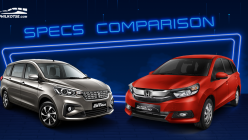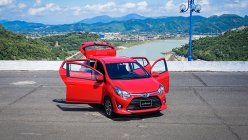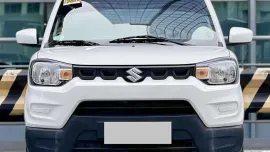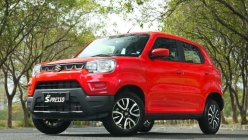In this article...
- Introduction
- Exterior
- Interior
- Safety
- Engine
- Price
- Conclusion
2024 Toyota Wigo vs Suzuki S-Presso: Which is the better city car?
With the release of the next-gen 2024 Toyota Wigo in July 2023, Toyota Motor Philippines now has a better contender in the highly contested local city car segment. It has a revamped exterior design and a whole bunch of new features to boot.
Suzuki S-Presso AGS AUTOMATIC... REQUEST GRANTED! | Philkotse Reviews
Now, this begs the question: how does the updated 2024 Wigo fare against the new and improved 2023 Suzuki S-Presso when it comes to specs? To find out, we’ll be comparing the Wigo E CVT against the S-Presso GL AGS. We chose these two trims to compare as both are within the Php 600,000 range.
ALL-NEW TOYOTA WIGO looks a lot more SERIOUS | Philkotse Quick Look
2024 Toyota Wigo vs Suzuki S-Presso: Exterior
When it comes to size, the Wigo E is 3,760mm long, 1665mm wide, and 1,515mm in height. It also has a wheelbase length of 2,525mm and a ground clearance of 160mm.
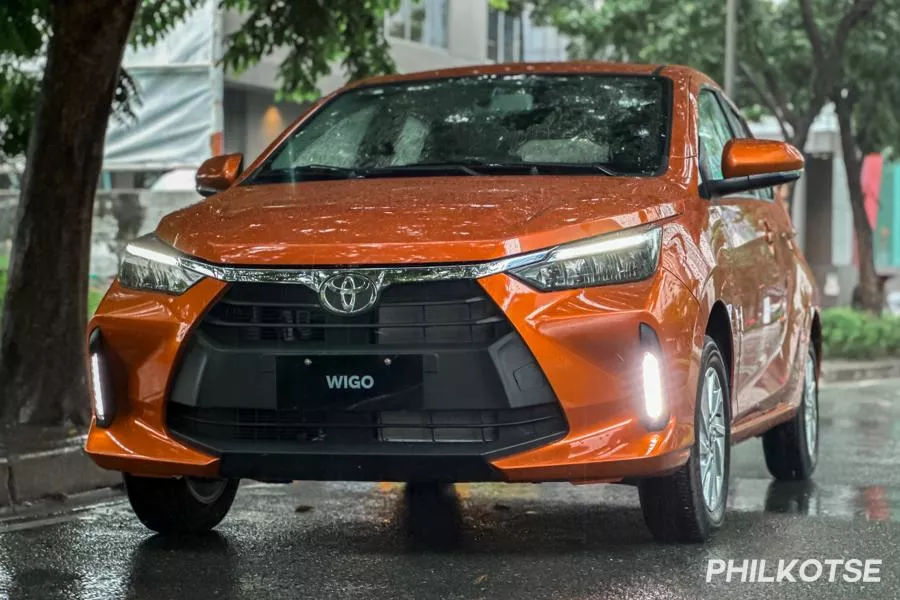
Toyota Wigo (G variant pictured)
The S-Presso GL AGS in comparison, is 3,565mm long, 1,520mm wide, and 1,657mm in height. Its wheelbase spans 2,380mm, and it has a ground clearance of 180mm.
| Toyota Wigo E CVT | Exterior | Suzuki S-Presso GL AGS |
| 3,760mm | Length | 3,565mm |
| 1,665mm | Width | 1,520mm |
| 1,515mm | Height | 1,657mm |
| 160mm | Ground clearance | 180mm |
| 2,525mm | Wheelbase | 2,380mm |
As indicated in the figures above, the Wigo E is fairly longer and wider than the Suzuki city car. It also has a longer wheelbase but is shorter in height compared to its Suzuki rival. The S-Presso however, does have a more generous ground clearance height than the Toyota.
That said, space could be more generous on the Wigo considering its size. The S-Presso however, might be better at dealing with rough roads and obstacles due to its higher ground clearance.
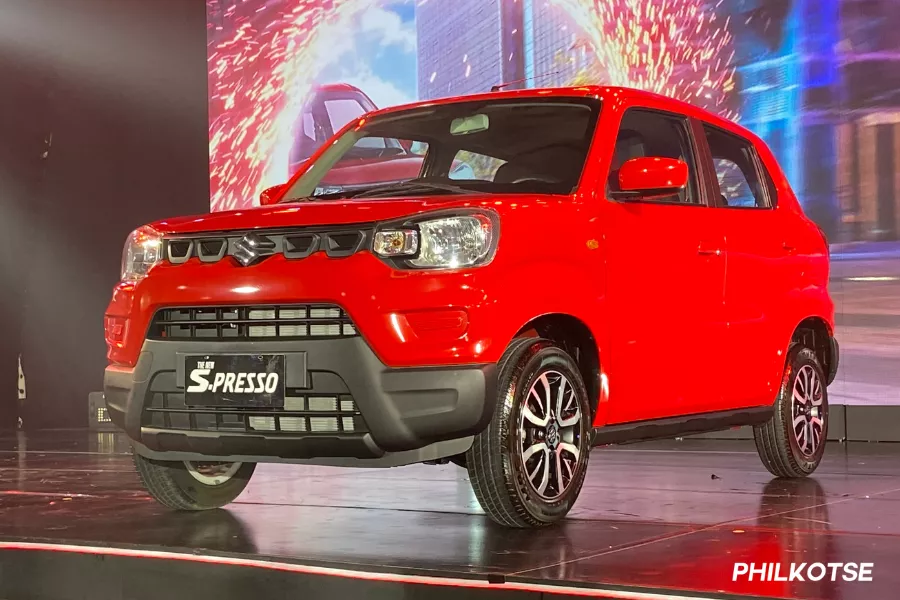
Suzuki S-Presso GL AGS
For exterior equipment, the Wigo E comes standard with split-type LED headlamps, a clearance lamp with line guides, LED front fog lamps, and halogen taillights. In turn, the S-Presso AGS gets halogen multi-reflector headlamps, a clearance lamp, and halogen taillights. Unlike the Toyota, the Suzuki lacks fog lamps.
While the Wigo has better exterior illumination, both cars do come with manual folding side mirrors, a roof-mounted pole antenna, and an intermittent front wiper. The S-Presso GL AGS, however, lacks a rear wiper present on the Wigo E. Meanwhile, the Suzuki gets power-adjustable side mirrors while the Toyota Wigo does not.
| Toyota Wigo E CVT | Exterior equipment | Suzuki S-Presso GL AGS |
| Split-type LED | Headlamps | Halogen |
| Halogen | Taillights | Halogen |
| 14-inch | Wheel size | 14-inch |
| Alloy | Wheel type | Alloy |
| LED | Front fog lamps | None |
| With | Rear wiper | None |
Completing the look of the Toyota Wigo E and S-Presso GL AGS are a set of 14-inch alloy wheels. The ones on the S-Presso however, get a two-tone look, while the Wigo’s wheels come in silver only.
2024 Toyota Wigo vs Suzuki S-Presso: Interior
Inside, both the Wigo E and the S-Presso AGS can seat up to five occupants. Both have fabric-clad seats, as well as manual climate control systems. The S-Presso AGS however, has dial-type AC controls, while the Wigo E has digital AC controls. On the flip side, the S-Presso’s only power windows are found on its driver and front passenger doors, while its rear doors have manual roll windows just like on its older pre-facelift version. The Wigo E meanwhile, has power windows for all four doors.
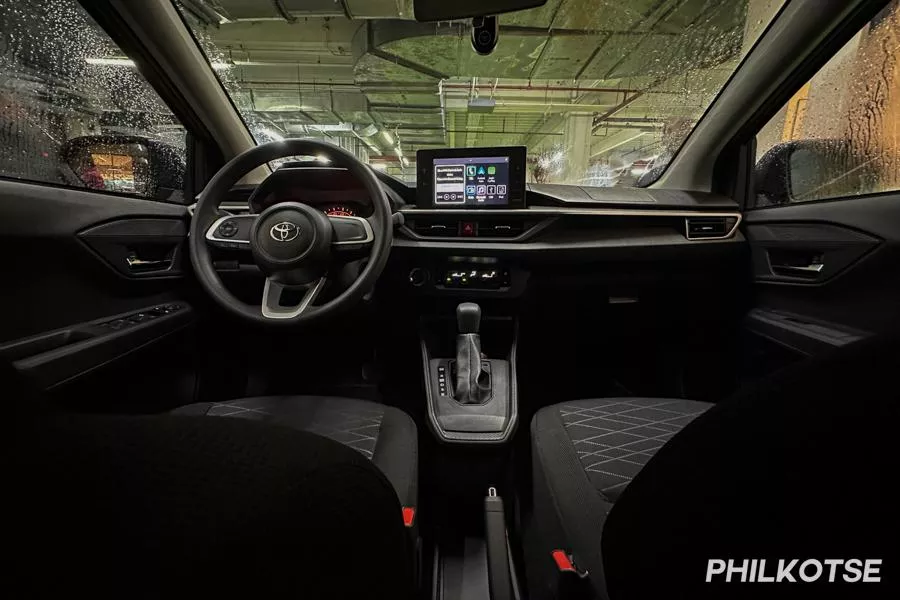
Inside the 2024 Toyota Wigo (G variant pictured)
For their drivers, both city cars provide a rotary ignition system, a tilt-adjustable steering column, a 12-volt accessory outlet, central locking, and an ample amount of bottle and cup holders. Both also get manually adjustable front seats. The Wigo E does have a keyless entry feature which is not present on the S-Presso AGS.
| Toyota Wigo E CVT | Interior equipment | Suzuki S-Presso GL AGS |
| Fabric | Seat material | Fabric |
| Manual | Driver’s seat adjustment | Manual |
| Tilt | Steering wheel adjustment | Tilt |
| Manual w/ digital controls | Air-conditioning type | Manual |
| Turnkey | Ignition | Turnkey |
| 5 | Seating capacity | 5 |
Other driver-centric features present on the Wigo are an analog gauge cluster and a digital trip meter. The equivalent for this on the S-Presso AGS is different as it comes in the form of a line-type mono-color display mounted above its central touchscreen. It provides the driver with essential information just like a traditional gauge cluster would.
Their rear passengers then get a bench-type seat that can fold down for more cargo space. At default, the Wigo E’s trunk can hold 258 liters while the S-Presso AGS’ trunk can accommodate 239 liters.
| Toyota Wigo E CVT | On-board tech | Suzuki S-Presso GL AGS |
| 8-inch touchscreen | Infotainment system | 7-inch touchscreen |
| Apple CarPlay, Android Auto, Bluetooth, USB | Connectivity options | Apple CarPlay, Android Auto, Bluetooth, USB |
| 2 | # of speakers | 2 |
| Analog | Gauge cluster | Line-type mono-color |
| Digital | Trip Meter | Line-type mono-color |
On-board entertainment on the Wigo E is handled by an eight-inch touchscreen with Apple CarPlay, Android Auto, Bluetooth, and USB connectivity. It is linked to a 2-piece speaker system, and it can take voice commands.
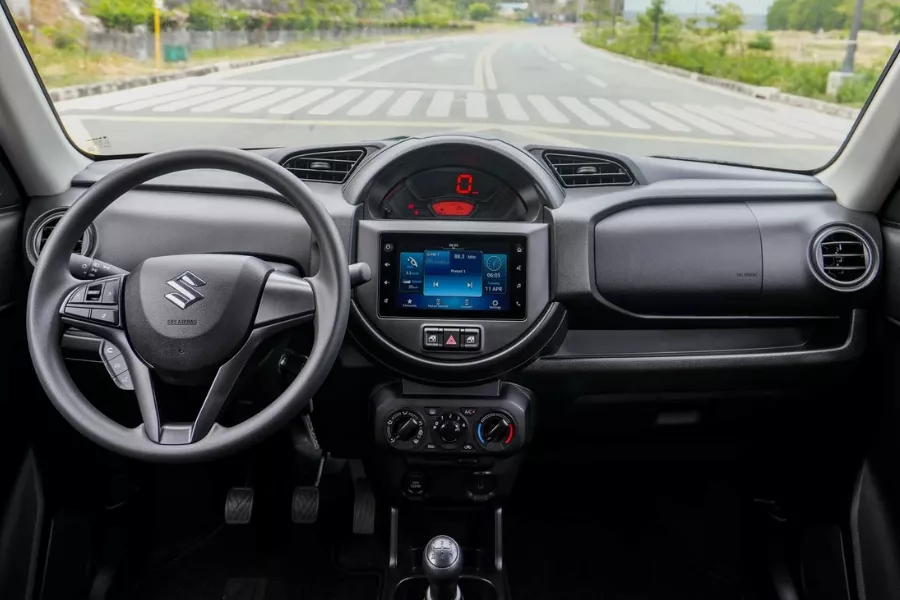
Inside the Suzuki S-Presso (manual version pictured)
The S-Presso AGS in turn, gets a smaller seven-inch touchscreen with a similar set of connectivity options to the Wigo E. It likewise has a 2-piece speaker system, and it can also take voice commands. In addition, the updated S-Presso now has an overhead microphone for better voice clarity during hands-free calls. This feature was not present in the older pre-facelifted S-Presso.
2024 Toyota Wigo vs Suzuki S-Presso: Safety
Safety for both city cars is handled by an array of standard equipment. Both cars get anti-lock braking, electronic stability control, ISOFIX child seat anchors, hill-assist control, rear parking sensors, and an engine immobilizer. Both cars also get dual front airbags.
| Toyota Wigo E CVT | Safety | Suzuki S-Presso GL AGS |
| 2 | # of Airbags | 2 |
| With | Anti-lock braking | With |
| With | Stability control | With |
| With | Hill-start assist | With |
| With | Rear sensors | With |
| With | Engine immobilizer | With |
| NA | Car alarm | NA |
2024 Toyota Wigo vs Suzuki S-Presso: Engine
Under the hood of the Wigo E is a 1.0-liter inline-3 gasoline engine that can make up to 66 horsepower and 89 Nm of torque. Power is sent to its front wheels by a continuously variable transmission (CVT).
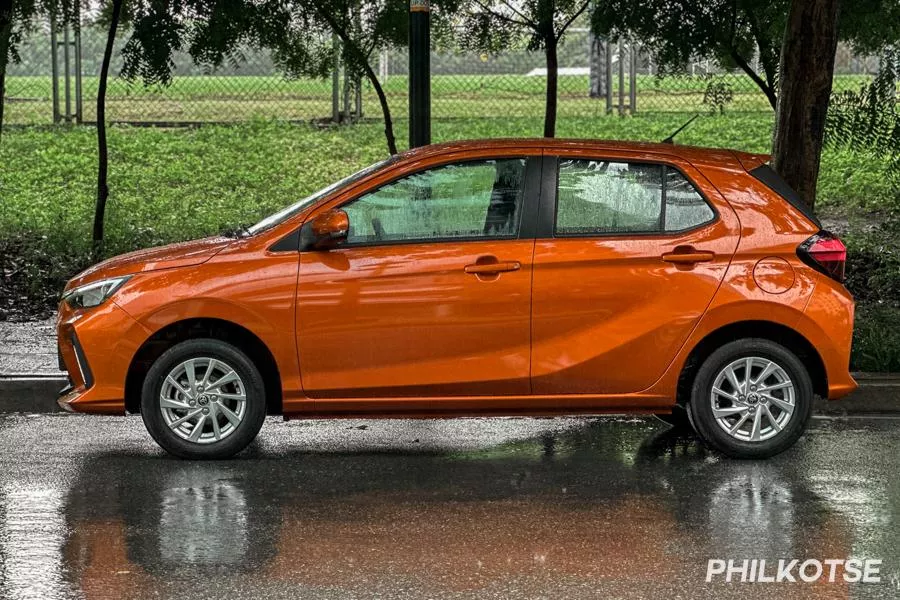
Toyota Wigo from the side (G variant pictured)
The Suzuki S-Presso AGS meanwhile, utilizes a 1.0-liter inline-3 gasoline engine that’s also good for 65 horsepower and 89 Nm of torque. Power is also sent to its front wheels.
That sounds similar to the Wigo so far, but the S-Presso’s five-speed auto gear shift (AGS) transmission works differently from CVT. The gist of it is that the AGS gets actual gears with fixed gear ratios and an automatic shift control actuator which functions as a clutch. The CVT on the Wigo meanwhile, uses a gearless belt-driven system with unlimited gear ratios.
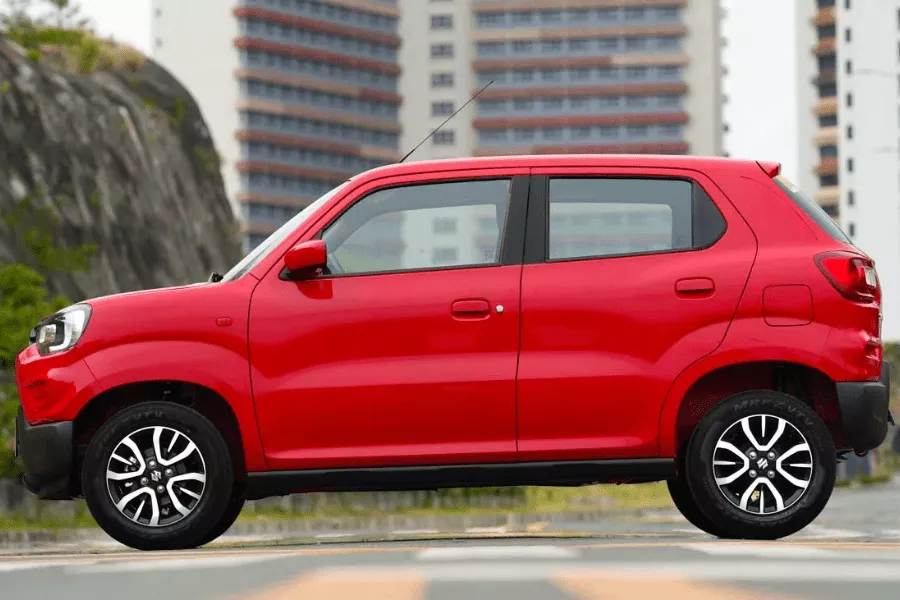
Suzuki S-Presso AGS from the side
The result is a vastly different driving feel between the two cars. On the Wigo, it will provide a linear acceleration with no audible gear changes or dips in the RPM range.
For the AGS meanwhile, it’s like driving a manual with an automatically engaging clutch, and that might take getting used to. On our long drive review of the S-Presso, we found that one has to lift off the gas and then apply gas if you want it to upshift. One will need to find the sweet spot on the accelerator to find the gear you want. That will come with practice.
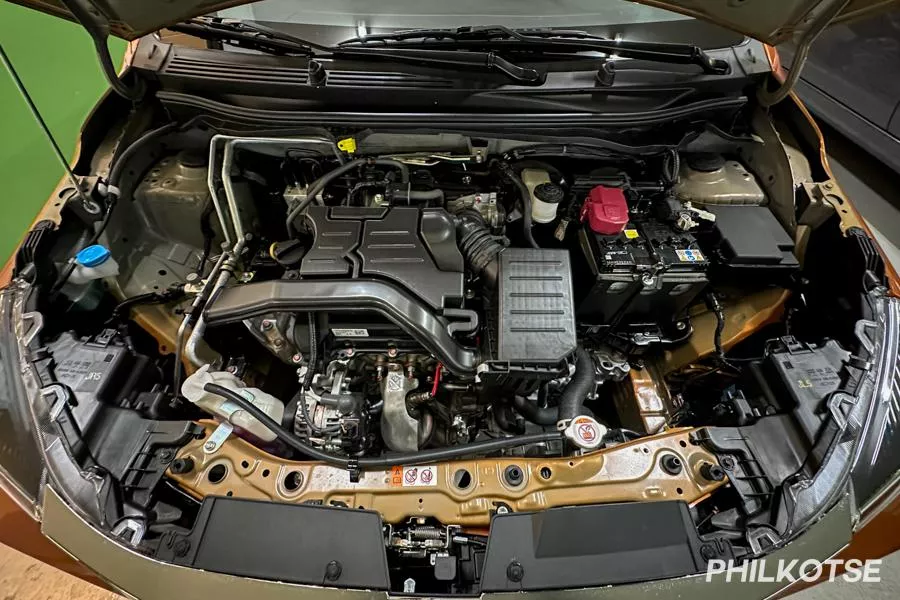
The Toyota Wigo's 1.0-liter inline-3 gasoline engine
Do note though, that the S-Presso has a gear-lever manual mode, which lets the user dictate the gear shifts. But even when using the manual mode, one will still need to let off the throttle before shifting.
For suspensions, both cars have a McPherson strut for the front and a torsion beam suspension for the rear. Both also use a front disc brake, a rear drum brake, and a hand-operated manual parking brake.
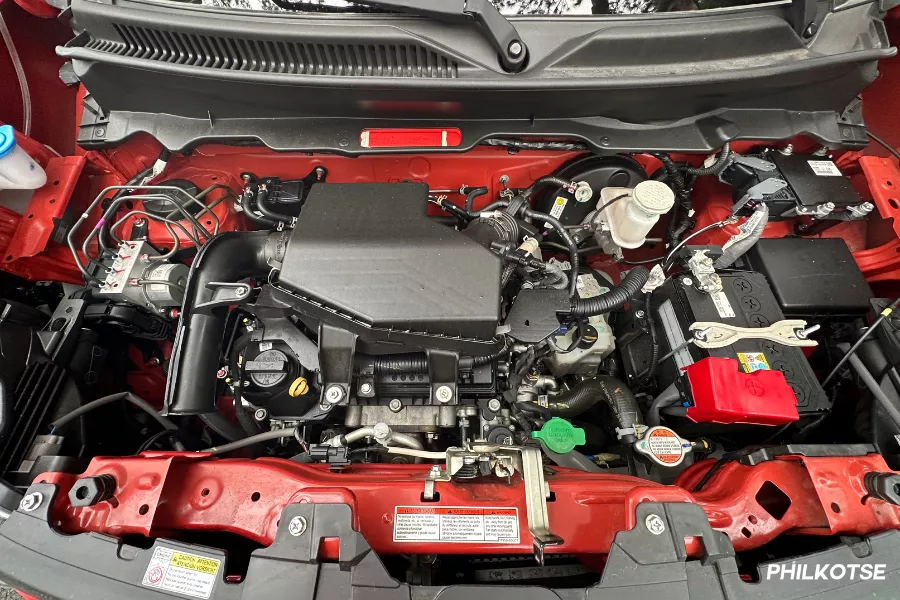
S-Presso's 1.0-liter inline-3 gasoline engine
The S-Presso AGS also gets an engine auto start-stop function (EASS) which is not available on the Wigo E. As per its name, it shuts off the engine to save on fuel when the car detects you’ve been idling for too long. It then restarts the engine automatically once your foot leaves the brake pedal.
| Toyota Wigo E CVT | Powertrain and performance | Suzuki S-Presso GL AGS |
| 1.0-liter inline-3 gasoline | Engine | 1.0-liter inline-3 gasoline |
| CVT | Transmission | 5-speed AGS |
| 66 | Horsepower | 65 |
| 89 Nm | Torque | 89 Nm |
2024 Toyota Wigo vs Suzuki S-Presso: Price
| 2024 Toyota Wigo Variants | Price |
| Wigo J MT | Php 609,000 |
| Wigo E CVT | Php 684,000 |
| Wigo G CVT | Php 729,000 |
| 2024 Suzuki S-Presso Variants | Price |
| S-Presso GL MT | Php 620,000 |
| S-Presso GL AGS | Php 660,000 |
2024 Toyota Wigo vs Suzuki S-Presso: Conclusion
In comparing the Wigo E to the S-Presso GL AGS, one can say that they do have notable similarities. They have the same engine outputs, almost the same entertainment system, as well as similar safety kits.
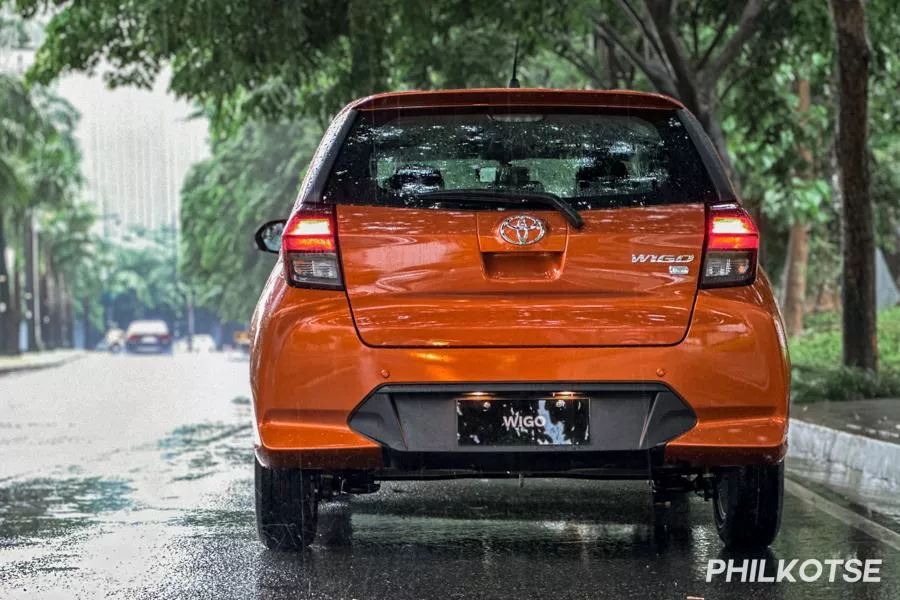
Wigo from the rear
The Toyota model, however, might be better at providing visibility compared to the Suzuki. It does this via its LED headlamps which are surely brighter than halogens on the S-Presso.
The key mechanical difference between the S-Presso and the Wigo however, is their very different transmissions with the AGS having gears and an automatically actuated clutch, while the CVT has no gears and no clutch at all. As a result, one will feel that they have vastly different driving feels as explained above.
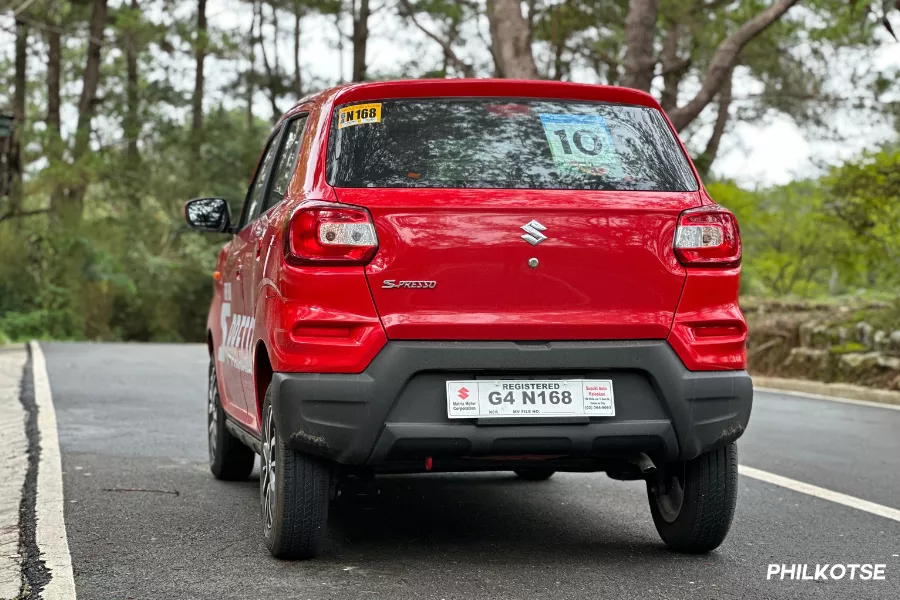
S-Presso from the rear
So for a clearer comparison between how the two cars are behind the wheel, we urge serious buyers to take each model for a test drive.
For more comparison articles like this, keep it here on Philkotse.
Recent posts
- All-new Toyota Wigo PH debut Jul 14, 2023
- facelifted Toyota Wigo facelift specs reveal Jul 12, 2023
- Suzuki S-Presso SE long drive review Jun 13, 2023
- 2023 Suzuki S-Presso AGS fuel eco May 16, 2023


